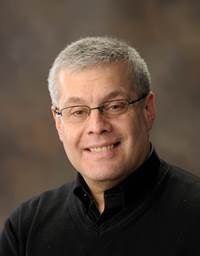Attracting more students into STEM education has long been a challenge for colleges and universities.
For example, African-Americans make up only 5 percent of undergraduate engineering degrees, as compared with 13 percent of overall undergraduate enrollment. Latinos fare similarly, and many schools wrestle with gross imbalances from a gender perspective.
 Mark Somerville
Mark Somerville
This effort is admirable, but it’s much like a car company offering rebates to buyers of an unpopular model: the emphasis is on getting the customer in the door, as opposed to really responding to the customer’s needs. Redesigning the car to appeal to more people would be a better option.
Likewise, to attract more students into STEM programs, colleges and universities need not only change their approach to recruiting, they also need to redesign their programs to appeal to a more diverse range of students.
As a result, a wider range of students are more likely to tell their younger siblings and friends, “I feel at home in this place because there are other people who look and act like me—and it’ll be welcoming for you too.” Recommendations like this have an effect on applications that outweighs the effect of any number of campus tours.
 David E. Goldberg
David E. Goldberg
Yet this view of diversity fails to consider all of the ways that people are different. Schools that expand their understanding of diversity can make their programs more appealing to a wider range of students.
Consider three types of “diversity” that often are missed:
Personal diversity. Empathizing-systematizing theory, developed by psychologist Simon Baron-Cohen, says that “empathizing” people are easily able to identify another’s thoughts and feelings and respond with empathy. “Systematizing” people are good at analyzing or constructing a system. Most people can be found somewhere between these extremes.
Debbie Chachra, an associate professor of materials science at the Frank W. Olin College of Engineering in Needham, Massachusetts, says that engineering today is taught almost exclusively as a systematizing discipline.
Almost all of the work conducted by students is analytical, focused on the right answer and devoid of the ambiguity that comes from working with real people—or real engineering. But the reality in the workforce is that both types of people, and skills, are needed. For example, research in teamwork shows that “empathizers” are critical to the success of teams.
Making STEM studies more welcoming to the “empathizing” part of the student population would broaden the range of students who will succeed in these programs—and who will recommend the program to others.
Aspirational diversity. All students have their aspirations and passions. Engineers are often perceived as important from an economic perspective, but they don’t do much for society at large, according to a Harris poll. The survey found that only 28 percent of people believe that engineers are sensitive to societal concerns and only 14 percent of people believe that engineers save lives.
STEM programs tend to attract students who love solving technical issues and are good at following a process for doing this. Colleges and universities need to shout out the social benefits that their graduates provide—safe drinking water, clean energy, low-pollution transportation, productive software and other wonders of our age.
If we can show students that they can live their passions for a better world through STEM education, they may see that this education is a building block that they can use to help build a better world.
Learning style diversity. Interview a dropout from an educational program, and you are likely to find a complaint that is something like, “I just don’t learn well in a classroom.” Often, this is because the teaching style offered didn’t match their learning style.
Lectures, textbooks, tests and projects are a good way to reach some students, but they don’t work well for all. Some students learn from experience, so more chances to participate help them learn. Others learn by drawing illustrations or schematics of a concept. If instructors think of a range of methods to convey a concept, more students will learn—and go on to become productive members of society.
We certainly need to attract a more diverse group of students to STEM. But the key to success is to change not only how we attract students, but also what their experiences are when they arrive.
Mark Somerville is associate dean and a professor of electrical engineering and physics at Olin College. David E. Goldberg is president of the nonprofit Big Beacon and professor emeritus at the University of Illinois at Urbana- Champaign. Together they authored (with Catherine Whitney) the new book A Whole New Engineer: The Coming Revolution in Engineering Education.





















